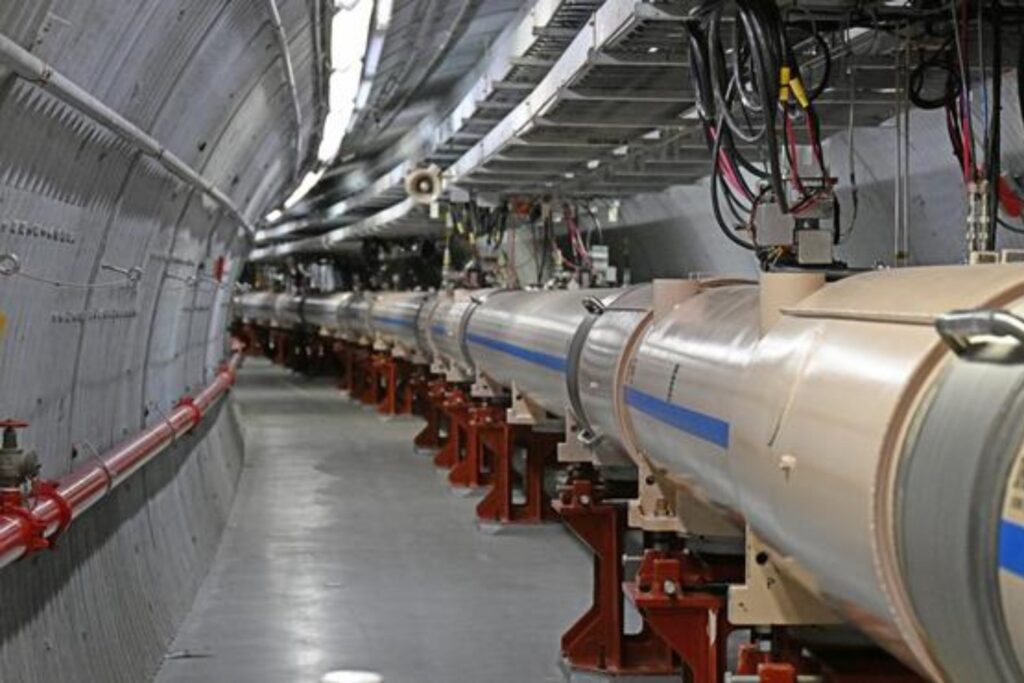After 25 years of smashing gold nuclei together at light speeds, Brookhaven National Laboratory’s Relativistic Heavy Ion Collider is hanging up its boots—erm, superconducting magnets.
The collider’s final run—its 25th—kicked off this week on Long Island, in a swan song for the venerable collider that will be succeeded—in fact, transformed into—Brookhaven Lab’s Electron-Ion Collider (EIC). Over the course of 2025, RHIC physicists will complete data collection on quark-gluon plasma, the soup of particles that existed in the earliest days of the universe.
“The original idea behind RHIC was to create, for the first time on Earth, a state of matter that existed in the universe a few microseconds after the Big Bang: the quark-gluon plasma, and we did,” said James Dunlop, the associate department chair for nuclear physics at Brookhaven Lab, in a call with Gizmodo. “That’s one of the big legacies—that we actually created it—but the more interesting thing is that its properties were quite different from what we’d expected them to be.”
“You don’t think that when you boil water, you’re going to make something that’s much more liquid than water itself, right?,” Dunlop added. “And that’s actually what we found: that is that the quark-gluon plasma behaves as the most perfect liquid that we know of.”
For the RHIC’s final run, the top priority is gold-on-gold collisions at energies of 200 billion electron volts. The collider will run those collisions through June, and will break in July and August to avoid running experiments in the sweltering summer heat.
The run is slated to collect observations on 10 billion events, according to Lijuan Ruan, co-spokesperson for the collider’s STAR detector, in a Brookhaven release.
“Additionally, we plan to leverage our detector’s ‘triggers’—sensors that analyze characteristics from collisions in real time—to acquire a substantial number of events enriched with high-energy particles,” Ruan added.
Like CERN’s Large Hadron Collider—which is a huge particle collider with experiments set up around its circumference—RHIC has several experiments that draw data from its collisions. In the upcoming run, the collider’s sPHENIX detector will try to capture data from about 50 billion collision events to study the quark-gluon plasma.
“By combining these RHIC measurements with high-energy experiments at Europe’s Large Hadron Collider—which generates a QGP at higher temperatures—we’ll be able to refine our understanding of how this exotic matter behaves as its temperature changes,” said Megan Connors, a physicist at Georgia State University and co-spokesperson of sPHENIX, in the same release.

When RHIC’s final run is over, Brookhaven will transition the collider into America’s next collider, the Electron-Ion Collider, by reusing components of the older setup and adding some new components for electron acceleration. That collider will be (pardon the pun) charged with looking inside atomic nuclei, protons, and neutrons. The collider will specifically scrutinize the strong nuclear force, which binds quarks together.
“From RHIC to EIC, scientists are mapping the transition of nuclear matter from a hot, dense state, generated in gold-gold collisions, and then planning to use electrons — the smallest projectiles — to probe cold nuclear matter at the EIC,” sPHENIX co-spokesperson Jin Huang said in the release.
Such basic research has implications for nuclear physics projects on Earth, but also understanding the primordial soup of particles that existed at the beginning of the universe. Such fundamental research is the rising tide that raises all boats—provided that science labs are given the resources to support that work.







